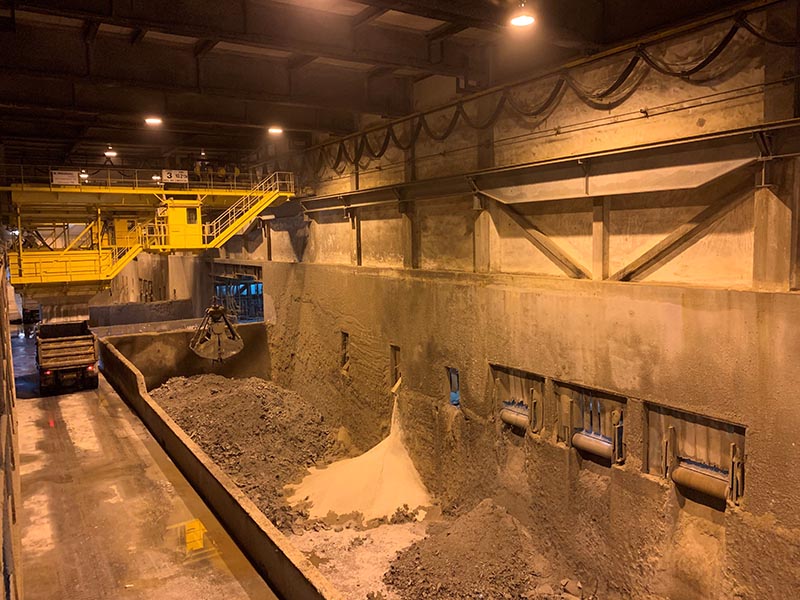Chapter 4 - Optimising Infrastructure For Maximum Resource Recovery
Even as new policies are implemented and infrastructure developed to achieve our vision as a Zero Waste Nation, we will need to continually improve existing waste management technologies to enhance our treatment of waste and recovery of resources.
For decades, Singapore has invested in infrastructure to collect, recycle and turn our waste to energy. Our waste collection infrastructure, such as refuse chutes, bin centres and waste collection vehicles have served us well in maintaining high environmental public health standards by ensuring that waste is properly collected and sent for disposal. Our Waste-to-Energy (WTE) plants, which reduce waste to ash, enable extensive space savings at Singapore’s only landfill while recovering energy from waste.
However, we want to go beyond converting waste into energy, to produce greener forms of energy such as syngas and recover other valuable resources from waste, such as turning waste into feedstock for the chemical industry. At the same time, we want to reduce the landfilling requirements from any residue of the waste treatment process. This will reduce our carbon footprint from incineration and further extend the lifespan of Semakau Landfill.
The Government has set our sights on closing the waste loop by encouraging Singaporeans to waste less and recycle more, developing new policies, and investing in research and development to find new ways to convert waste into usable, and even marketable products. This includes upgrading our waste management infrastructure, from collection to waste treatment and post-treatment options. We want to make waste collection more manpower-efficient, improve the energy efficiency of our WTE plants, and create new material out of incineration bottom ash (IBA).
Here is how we plan to do it.
PNEUMATIC WASTE CONVEYANCE SYSTEM
Waste collection today is often associated with unpleasant odours and pests. Within many developments, it is also manpower intensive for waste to be transported from refuse chutes to the bin centre.
The Pneumatic Waste Conveyance System (PWCS) provides a solution to these problems. It is an automated waste collection system which conveys waste by air suction from individual buildings through a network of pipes to a central location for collection. This removes the need for manual collection of waste from individual refuse chutes. As an enclosed system, waste is not exposed throughout the transfer process, reducing odour and pest problems. Waste collection can become more manpowerefficient. PWCS will offer a cleaner and more liveable environment.
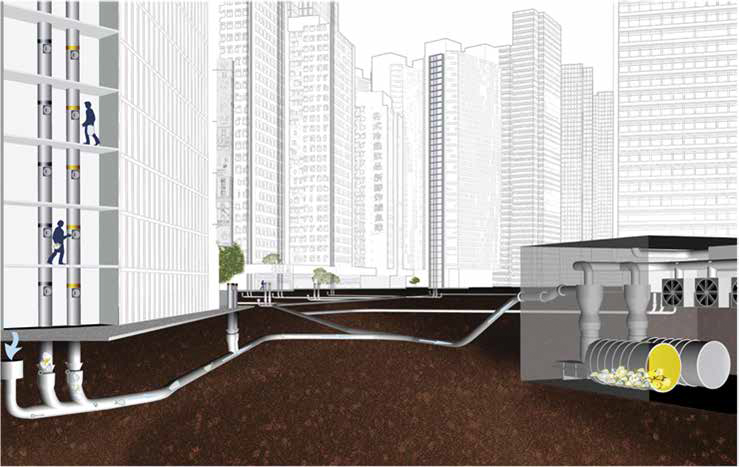
To increase the adoption of PWCS, since 1 April 2018, new development applications for non-landed private residential developments with 500 Dwelling Units (DUs) or more have been required to implement the system. This adds to over 140 existing private residential and commercial developments with PWCS.
Further economies of scale can be reaped by implementing district-level PWCS (DPWCS). Instead of bin centres for each development, the district can share a central bin centre, which can be located away from residents’ homes. This will also reduce refuse truck traffic within the district, as refuse will only be collected from one bin centre. HDB has already introduced DPWCS in new HDB estates such as Tampines North, Punggol North and Bidadari and will also be introducing it in the latest new town, Tengah.
The first DPWCS to serve multiple private developments is being planned for the Kampong Bugis precinct. It is expected to serve commercial developments and approximately 4,000 private residential DUs.
Through these efforts, the Government aims to mitigate future challenges that the waste collection industry will face due to increasing manpower shortages and an ageing workforce.
PILOT MECHANICAL BIOLOGICAL TREATMENT FACILITY
Designed to recover materials from refuse, a pilot Mechanical and Biological Treatment (MBT) facility offers an alternative way to treat Domestic and Trade Waste (DTW).
It will have a mechanical process to recover recyclables like plastics, ferrous and nonferrous metals, and an aerobic biological treatment process to convert the waste into Solid Recovered Fuel (SRF). Only a small amount of residue will be left for disposal.
The pilot facility will be able to treat 500 tonnes of DTW daily. The mechanical process will be able to recover up to 15% of recyclables, or over 500,000 tonnes of recyclables over 20 years. With this, we are able to extract valuable recyclables from waste that would otherwise be incinerated, allowing the materials to re-enter the value chain. Whatever is not recovered will undergo a biological process which produces SRF as an end product.
The NEA will monitor the operation of the pilot facility and assess its viability for wider adoption.
TUASONE WASTE-TO-ENERGY PLANT
The TuasOne WTE plant – Singapore’s 6th WTE plant – illustrates the circular economy principle of resource efficiency. With a treatment capacity of 750 tonnes of waste per day per ha (t/d/ha), it will be the most compact plant in the world. It will also be the most energy-efficient among Singapore’s existing WTE plants.
Built to meet part of our waste incineration needs for the next 25 years, the plant – developed on 4.8 ha of land – will have the capacity to incinerate 3,600 tonnes of waste per day.

TUAS NEXUS: INTEGRATED WASTE MANAGEMENT FACILITY
By co-locating and integrating the treatment of solid waste and used water, Tuas Nexus will be able to recover resources from waste more efficiently and with less space.
Tuas Nexus will comprise the NEA’s Integrated Waste Management Facility (IWMF) and PUB’s Tuas Water Reclamation Plant (TWRP).
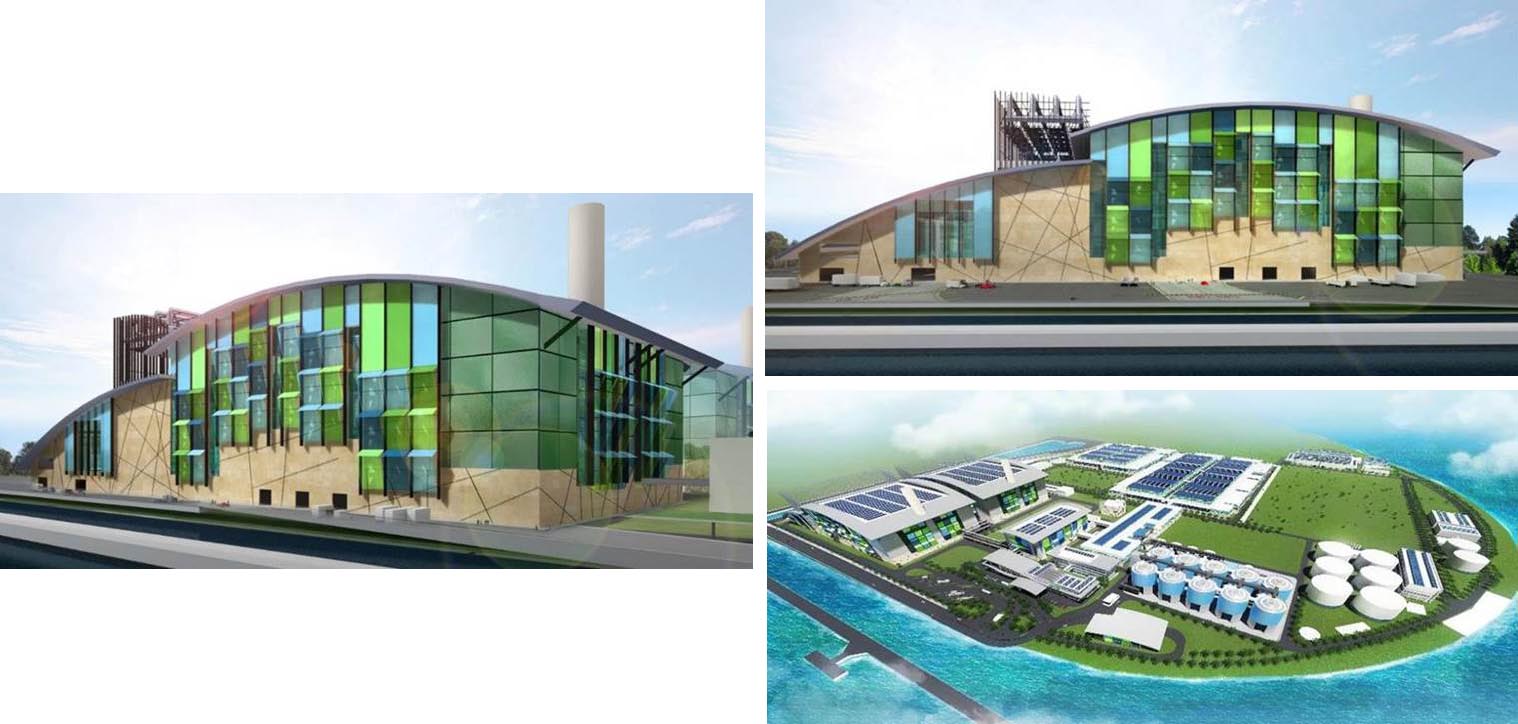
The IWMF will use advanced technologies to handle multiple waste streams and construction will be completed over two phases. The first phase of IWMF will be completed by 2024 while the second phase is estimated to be completed by 2027.
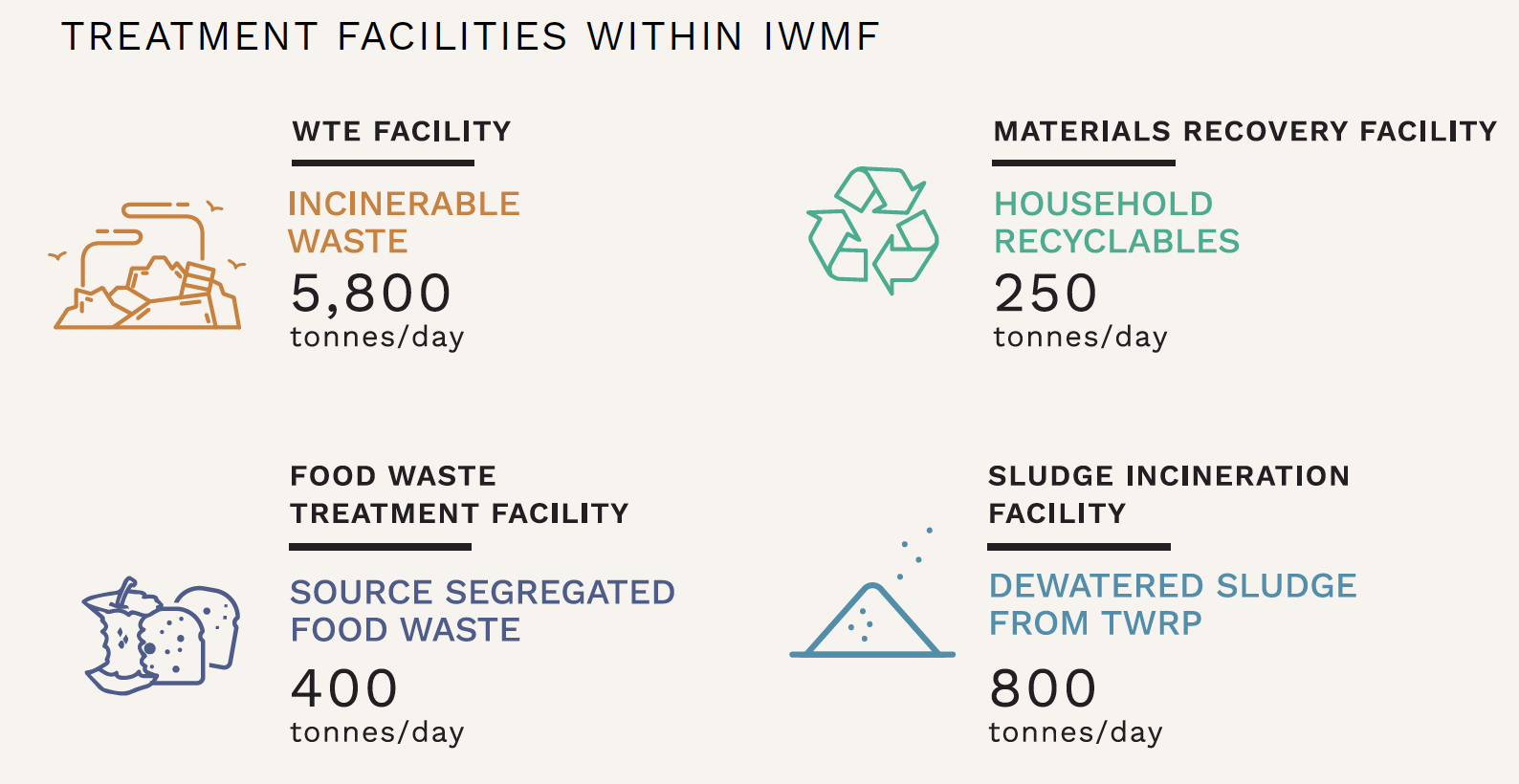
What makes the IWMF novel?
Expected to produce enough electricity to power about 300,000 four-room apartments a year, the IWMF comes with a slew of advanced technologies.
Its combustion processes and boiler designs will operate at high steam parameters of about 440oC/55 bar as compared to 365oC/33 bar at our existing WTE plant.
The use of external biogas super heaters will further boost the steam parameters at IWMF from 440oC/55 bar to 480oC/55 bar to achieve high overall plant energy conversion efficiency of about 28% and maximise electricity production.
To keep its environmental impact to the minimum, the IWMF will adopt a Wet Flue Gas Treatment (FGT) system that produces the cleanest possible air emissions and fulfils Singapore’s air emission requirements. The Wet FGT system will also minimise the amount of solid residue for disposal as less fly ash is generated compared to conventional dry FGT systems.
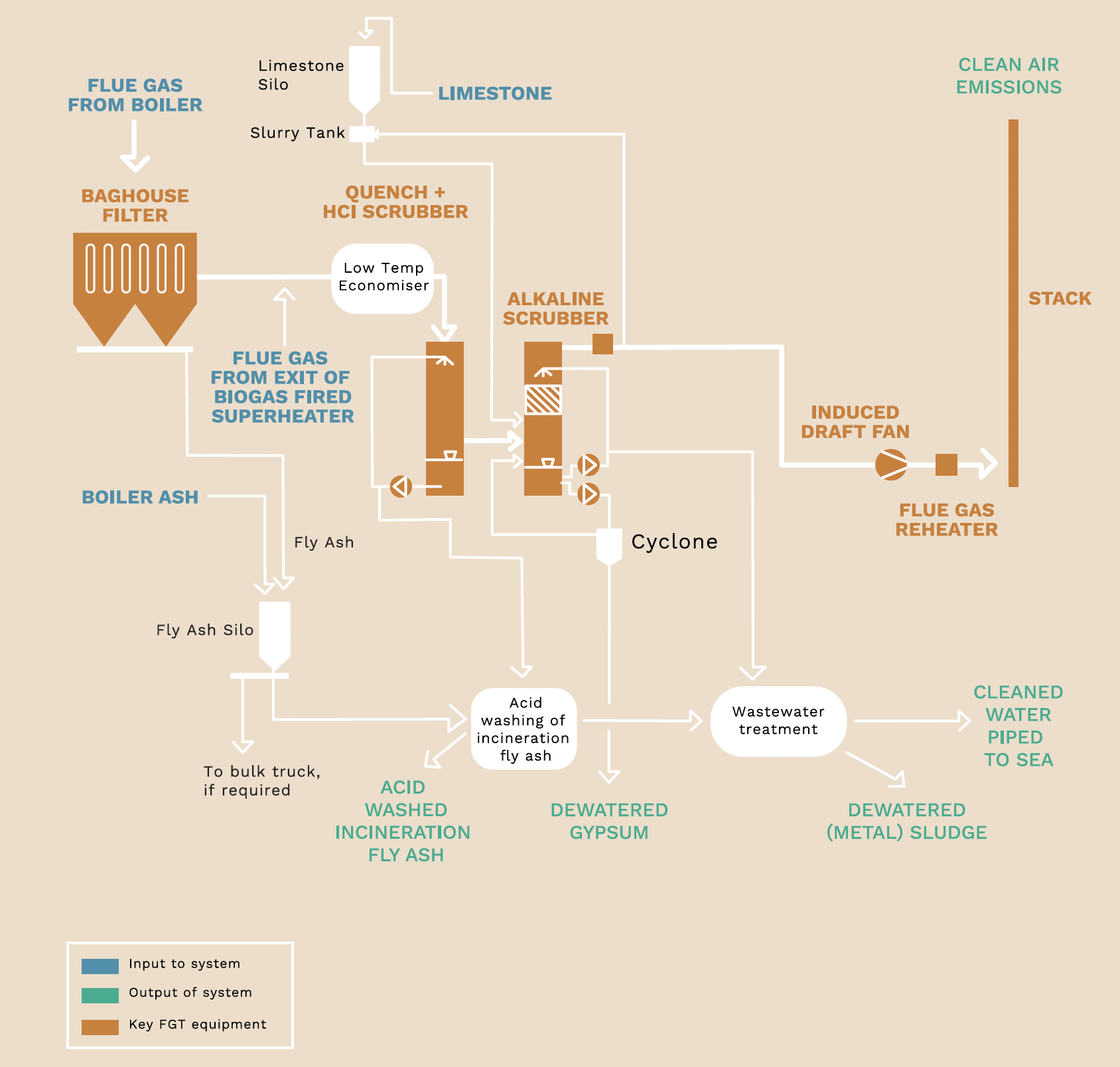
The IWMF will be designed as an iconic, green development to showcase the NEA’s vision as a leader in environmental stewardship to achieve zero waste and a circular economy. The Tuas Nexus will integrate processes and systems to optimise resources and achieve long-term environmental sustainability.
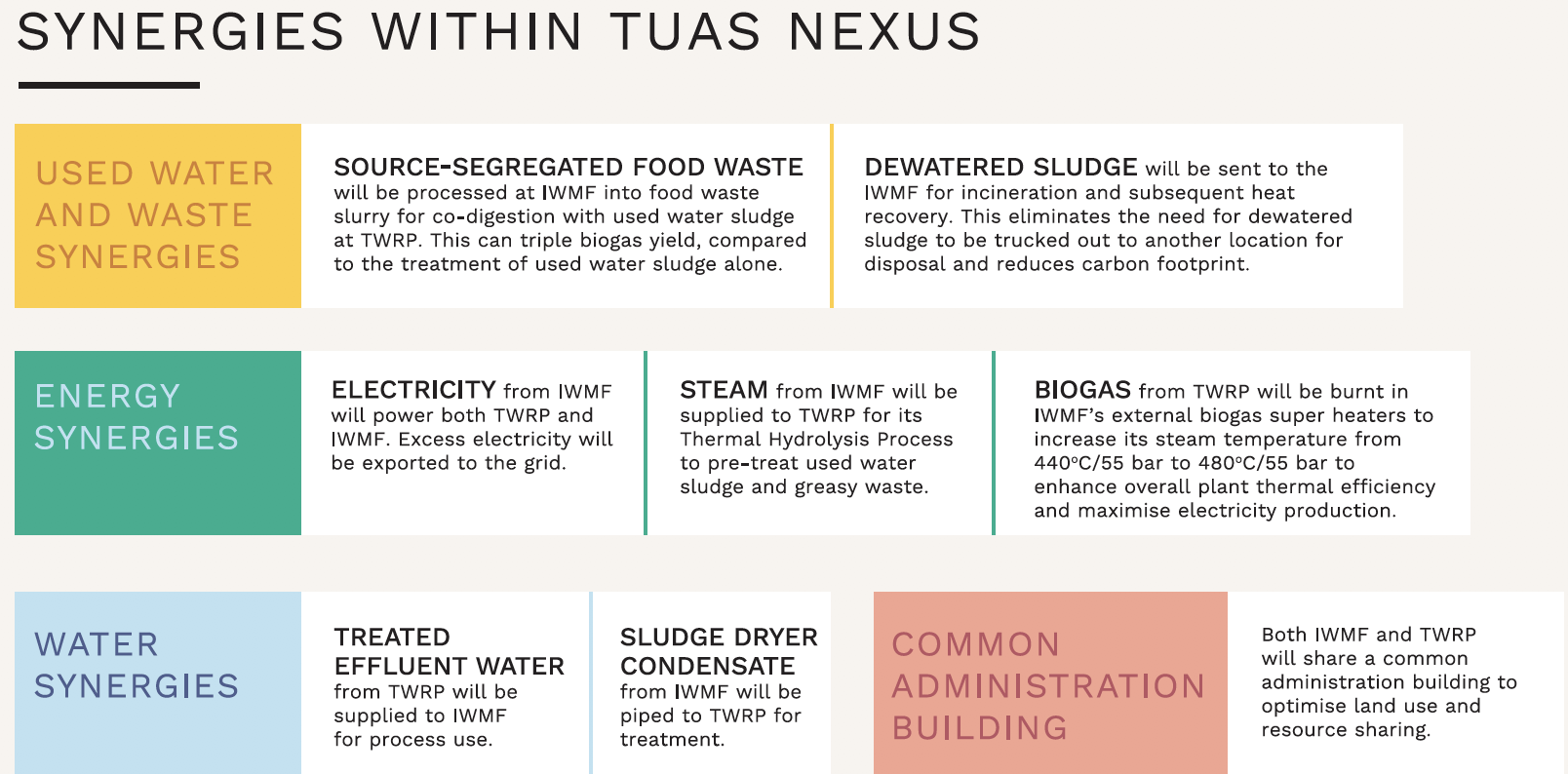

HARVESTING INCINERATION BOTTOM ASH FOR CONSTRUCTION
While we reduce our waste to just a fraction of its original volume on a daily basis, the resulting ash still takes up space on our offshore Semakau Landfill.
Each year, about 500,000 tonnes of IBA and 200,000 tonnes of non-incinerable waste are disposed of at the landfill. At this rate, Semakau Landfill will be full by 2035.
To divert IBA from our landfill, we are developing ways to use it in non-structural construction such as road base/sub-base materials or aggregates in non-structural concrete as “NEWSand”. This is a key strategy to maximise resource recovery and the lifespan of current and future landfills.
The NEA is developing environmental standards and guidelines to regulate the use of NEWSand, and ensure that the environment and public health are not compromised.
A tender for the demonstration of IBA treatment methods was awarded in 2018 to identify and validate treatment methods that would render it suitable and environmentally safe for use. Field trials will be conducted after the demonstration. More details can be found in Chapter 6.
If successful, the use of IBA in non-structural applications, together with new waste treatment facilities that maximise waste recovery such as the MBT facility, TuasOne WTE Plant and Tuas Nexus, will help us to treat the waste disposed of more efficiently, maximise resource recovery and reduce waste residues sent to Semakau Landfill.
